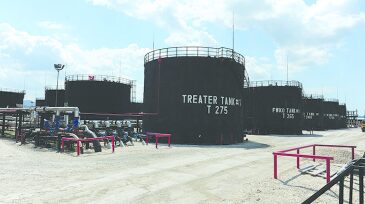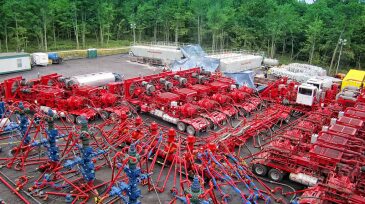horizontal wells
-
In organic shales, hydraulic fracturing is important for optimizing the production of horizontal wells. For a standalone lateral, the propped surface should be maximized to increase production. In the case of a pad, well spacing is an additional factor.
-
This paper offers an alternative explanation for the early boundary-dominated flow related to dissolution of salt-sealed natural fractures in the shale.
-
An analysis studied whether a well's toe could be affecting the production performance.
-
Larger-diameter coiled tubing recently has been used to perform millouts because of its improved set-down force and increased annular velocities for cleanout purposes. Service companies and operators have reduced the number of wiper trips when using larger-diameter CT, to save time and money.
-
Europe’s largest onshore oil field, the Patos-Marinza in southern Albania, has been given a new lease on life after seeing production soar from 600 B/D just over a decade ago to more than 20,000 B/D this year.
-
The challenges for operators in the Eagle Ford have been enormous, which can push chemical management to the back burner. But there is a price to be paid down the road. Operators have recently become more mindful of implementing metric-driven chemical management programs.
-
Successful development of flank areas depends on accurate reservoir characterization—in particular, water-saturation distribution—in addition to the optimal areal and vertical placement of wells.
-
Unconventional resources are often in good supply, but difficult and expensive to develop. To develop unconventional resources, technologies like hydraulic fracturing and horizontal drilling are key, and higher oil prices will help.
Page 5 of 5








